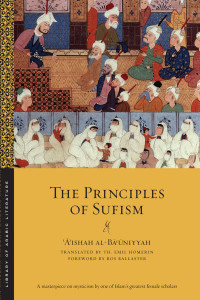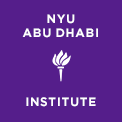Elias G. Saba writes about his experience teaching religious studies at Grinnell College using books from the Library of Arabic Literature, from al-Shāfiʿī’s Epistle on Legal Theory to Aḥmad Fāris al-Shidyāq’s Leg over Leg.
 I have been teaching religious studies at Grinnell College for the past four years. As I develop my courses, texts from the Library of Arabic Literature (LAL) have become key components of many of my syllabuses. I have used some of the paperback editions and made extensive use of the digital editions of these texts, available through Grinnell’s library. In this post, I will discuss the various ways these texts have enriched my classes, some obvious and some less so. I hope that by providing an overview of how I have used these texts in class, I will start a conversation about how these books may serve other scholars in teaching classes for undergraduates.
I have been teaching religious studies at Grinnell College for the past four years. As I develop my courses, texts from the Library of Arabic Literature (LAL) have become key components of many of my syllabuses. I have used some of the paperback editions and made extensive use of the digital editions of these texts, available through Grinnell’s library. In this post, I will discuss the various ways these texts have enriched my classes, some obvious and some less so. I hope that by providing an overview of how I have used these texts in class, I will start a conversation about how these books may serve other scholars in teaching classes for undergraduates.
In my entry-level course “Traditions of Islam,” we read from three different LAL texts. Early in the class, we focus on the figure of the Prophet Muḥammad. This section of the course ends with three selections from Maʿmar ibn Rāshid’s The Expeditions (translated by Sean W. Anthony). The stories “Those Who Emigrated to Abyssinia,” “The Story of the Slander,” and “The Marriage of Fatimah” correspond with a variety of themes I hope students learn in this unit. These stories highlight several interesting themes in the biography of Muḥammad including the role of women in his society and early Muslim-Christian interactions. Through these readings, important figures from the dawn of Islam are brought to life and given deep characterization. Students greatly enjoyed seeing ʿĀʾishah’s assertiveness and the community intrigue surrounding her marriage to Muḥammad. We can see these religious figures become human through the text.
 Later in the semester, while discussing hadith and scripture as sources of Islamic law, we read the “Chapter on Legal Interpretation” from Muḥammad ibn Idrīs al-Shāfiʿī’s Epistle on Legal Theory (translated by Joseph E. Lowry). Here, al-Shāfiʿī argues with an interlocutor about the correct way of determining the direction of the Kaaba for prayer. We can see the way that al-Shāfiʿī cites Qurʾanic verses, hadith reports, and his own interpretation of these texts. Moreover, al-Shāfiʿī explains how to read these sources together in order to gain better understanding of Islamic law. The discussion about determining the direction of the Kaaba ultimately comes down to a personal effort at determining the correct answer, such that multiple distinct answers can be legally valid, even if not factually correct. The relationship between the revealed sources and the legal disagreements is clear, as is the thread of al-Shāfiʿī’s discussion. Students can see for themselves how he develops his legal rationale, while the everyday nature of the dispute—how to know the orientation of one’s prayer—helps show the applicability of this potentially abstruse discussion on legal theoretical principles.
Later in the semester, while discussing hadith and scripture as sources of Islamic law, we read the “Chapter on Legal Interpretation” from Muḥammad ibn Idrīs al-Shāfiʿī’s Epistle on Legal Theory (translated by Joseph E. Lowry). Here, al-Shāfiʿī argues with an interlocutor about the correct way of determining the direction of the Kaaba for prayer. We can see the way that al-Shāfiʿī cites Qurʾanic verses, hadith reports, and his own interpretation of these texts. Moreover, al-Shāfiʿī explains how to read these sources together in order to gain better understanding of Islamic law. The discussion about determining the direction of the Kaaba ultimately comes down to a personal effort at determining the correct answer, such that multiple distinct answers can be legally valid, even if not factually correct. The relationship between the revealed sources and the legal disagreements is clear, as is the thread of al-Shāfiʿī’s discussion. Students can see for themselves how he develops his legal rationale, while the everyday nature of the dispute—how to know the orientation of one’s prayer—helps show the applicability of this potentially abstruse discussion on legal theoretical principles.
 Finally, the third LAL text we studied in “Traditions of Islam” was Th. Emil Homerin’s translation of ʿĀʾishah al-Bāʿūniyyah’s Principles of Sufism. All four principles are compelling, although in my class we read “The Third Principle: Remembrance (Dhikr),” given that our unit on Sufism centered around remembrance practices. This text brings a pre-modern woman’s voice into our syllabus, a voice that is often unheard but is embraced by students. This text also demonstrates the way in which certain kinds of Sufi practice were heavily intellectualized and depended almost entirely on the authority of past masters and a series of student-teacher relationships.
Finally, the third LAL text we studied in “Traditions of Islam” was Th. Emil Homerin’s translation of ʿĀʾishah al-Bāʿūniyyah’s Principles of Sufism. All four principles are compelling, although in my class we read “The Third Principle: Remembrance (Dhikr),” given that our unit on Sufism centered around remembrance practices. This text brings a pre-modern woman’s voice into our syllabus, a voice that is often unheard but is embraced by students. This text also demonstrates the way in which certain kinds of Sufi practice were heavily intellectualized and depended almost entirely on the authority of past masters and a series of student-teacher relationships.
This past fall, I taught a course titled “Studying Religion: The Middle East.” As an introduction to the field of religious studies, the class provided a methodological overview of the field. The class used a few theoretical texts to ground our readings, and I wanted to use a variety of primary source readings to highlight the variety of different textual sources that inform religious studies scholarship. One of the problems I faced in constructing the syllabus was a general lack of available primary sources. As I put together my syllabus, I drew on texts from the Library of Arabic Literature to complete our units on modernity and colonialism.
 For this course, we read from two different books. First, from Yūsuf ibn Muḥammad al-Shirbīnī’s Brains Confounded by the Ode of Abū Shadūf Expounded (translated by Humphrey Davies), we read the chapters titled “The Author Embarks on a Description of the Country Folk” and “An Account of their Pastors and the Compounded Ignorance, Imbecility, and Injuries to Religion and the Like of Which They Are Guilty.” Al-Shirbīnī’s text is full of rich descriptions which are both comic and disturbing. A satire, Brains Confounded provides a litany of examples of the stereotypes held about rural peasants by at least one Egyptian intellectual. In the context of a class on religion, these passages were particularly interesting to see the ways in which al-Shirbīnī negatively constructed an ideal of religion and pious behavior. In a more advanced class, I can imagine focusing more specifically on the language he uses to describe the “pastors,” drawing heavily from themes and motifs from the Arabo-Islamic heritage.
For this course, we read from two different books. First, from Yūsuf ibn Muḥammad al-Shirbīnī’s Brains Confounded by the Ode of Abū Shadūf Expounded (translated by Humphrey Davies), we read the chapters titled “The Author Embarks on a Description of the Country Folk” and “An Account of their Pastors and the Compounded Ignorance, Imbecility, and Injuries to Religion and the Like of Which They Are Guilty.” Al-Shirbīnī’s text is full of rich descriptions which are both comic and disturbing. A satire, Brains Confounded provides a litany of examples of the stereotypes held about rural peasants by at least one Egyptian intellectual. In the context of a class on religion, these passages were particularly interesting to see the ways in which al-Shirbīnī negatively constructed an ideal of religion and pious behavior. In a more advanced class, I can imagine focusing more specifically on the language he uses to describe the “pastors,” drawing heavily from themes and motifs from the Arabo-Islamic heritage.
 This class also discussed a selection from Aḥmad Fāris al-Shidyāq’s Leg over Leg (translated by Humphrey Davies), namely, “Chapter 20: The Difference between Market-men and Bag-men” from Book One, and from Book Two, “Chapter 5: A Description of Cairo,” “Chapter 7: A Description of Cairo,” and “Chapter 8: A Notice that the Description of Cairo is Ended.” In this passage, we see a portrait of Cairo in action. In these descriptions of the city and its inhabitants, there is no clear discussion or even mention of religion. Why is this the case? Are the expectations of the reader to blame? Is this text alerting us to a rising secularism with the arrival of European hegemony? Is religion present by not meeting our expectations? Throughout the semester, our class explored the nature of religion and its manifestations. In reading this text towards the end of the semester, we were able to stretch our understandings of what can count or not count as “religion.”
This class also discussed a selection from Aḥmad Fāris al-Shidyāq’s Leg over Leg (translated by Humphrey Davies), namely, “Chapter 20: The Difference between Market-men and Bag-men” from Book One, and from Book Two, “Chapter 5: A Description of Cairo,” “Chapter 7: A Description of Cairo,” and “Chapter 8: A Notice that the Description of Cairo is Ended.” In this passage, we see a portrait of Cairo in action. In these descriptions of the city and its inhabitants, there is no clear discussion or even mention of religion. Why is this the case? Are the expectations of the reader to blame? Is this text alerting us to a rising secularism with the arrival of European hegemony? Is religion present by not meeting our expectations? Throughout the semester, our class explored the nature of religion and its manifestations. In reading this text towards the end of the semester, we were able to stretch our understandings of what can count or not count as “religion.”
These are just a few examples of how LAL has enriched my teaching. Although there are many reasons why it is a pleasure to teach with these texts, the quality and readability of the translations should not be overlooked. These texts are clear and fun to read. I look forward to continuing to use these books in my teaching and am eager to hear how others are doing so.
Elias G. Saba is a senior lecturer in the History and Religious Studies Departments at Grinnell College. His research focuses on the changing uses and interpretations of the classical Arabo-Islamic heritage in a variety of chronological and geographic contexts. He is especially concerned with the legacies of the literary and legal traditions in Arabic writing. His first monograph Harmonizing Similarities: A History of Distinctions Literature in Islamic Law was published by De Gruyter in 2019. The syllabuses for these classes can be found on his academia.edu page. He can be reached at sabaelia@grinnell.edu.

